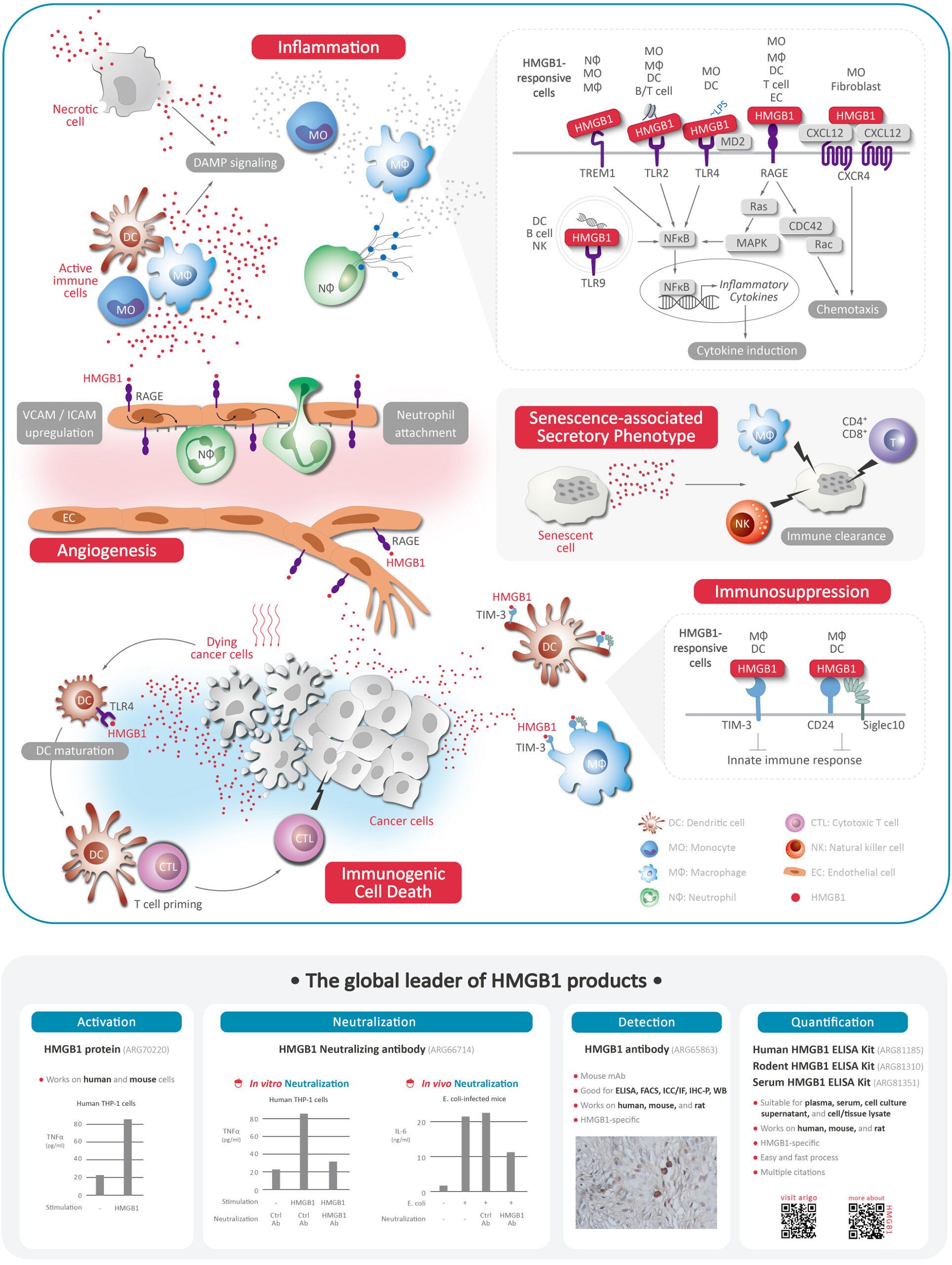MxA: differentiation between viral and bacterial infections
Biovendor introduces a new laboratory tool for differentiation of viral and bacterial respiratory tract infections (RTI) to reduce unnecessary antibiotic prescriptions.
arigo Biolaboratories: HMGB1 mediates inflammation and is linked to infection, sepsis, myocardial infarction, and inflammatory diseases. It is also an ICD marker used to assess the efficacy of anti-cancer therapies.
HMGB1 is a multifunctional protein with various roles in different cellular compartments. It is associated with various pathogenesis such as cancers, neurodegenerative disorders, and multiple inflammatory diseases. HMGB1 has attracted the attention of both basic and clinical researchers as HMGB1 is a therapeutic target for a wide range of diseases. arigo offers a total solution to facilitate the HMGB1-related research.

In the extracellular compartment, HMGB1 is passively released by necrotic cells and acts as a chemokine and DAMP (Damage-associated molecular pattern) to trigger inflammatory responses. Besides, HMGB1 is also secreted from activated dendritic cells and macrophages and functions as a cytokine, it acts as a ligand for RAGE, TLR-2 and TLR-4 thus activating the signal pathways and the following inflammation responses. Elevated HMGB1 levels are found in various pathological conditions such as acute poisoning, infection, sepsis, myocardial infarction, and inflammatory diseases.
HMGB1 is described as a consensus marker for immunogenic cell death (ICD). The released HMGB1 binds to TLR4 to induce DC maturation, antigen presentation and subsequent cytotoxicity mediated by CD8+ T cells. HMGB1 levels represent a pivotal indicator to evaluate the efficacy of anti-cancer therapies. arigo offers quality antibodies and ELISA kits and to accelerate the research of ICD.

ICD is a form of cell death resulting in an activation of immune response. ICD is triggered by damage-associated molecular patterns (DAMPs) such as exposure of calreticulin (CRT) at plasma membrane and release of HMGB1 and ATP. DAMPs contribute to the maturation of dendritic cells (DCs), which present antigens to CD8+ T cells, leading to activation of adaptive immunity. Accumulated reports reveal that irradiation or chemotherapy not only results to cancer cell death but also induces immunological anti-tumor responses via ICD. It is believed that the combination of ICD induction and other anti-cancer therapy is a promising approach for cancer treatment.
In the nucleus, HMGB1 acts as a DNA-binding protein for gene transcription, gene regulation and DNA repair. In the cytosol, HMGB1 induces autophagy by interacting with Beclin-1 which results in its dissociation from Bcl2 and the subsequent induction of autophagy.
We gladly support you by keeping you updated on our latest products and the developments around our services.